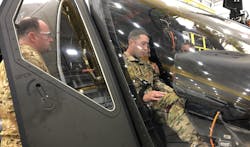WASHINGTON – It is rare when technological innovation delivers change that fundamentally reshapes military operations. Helicopters made one of these rare breakthroughs after World War II. The ability to support land operations with vertical lift aircraft fundamentally changed how militaries moved on the battlefield. Defense News reports. Continue reading original article
The Military & Aerospace Electronics take:
27 July -- It is less commonly appreciated, however, that Future Vertical Lift (FVL) aircraft may do just as much to reshape industry as they do military operations.
To deliver the capabilities FVL requires affordable development, production and sustainment. Industry will have to leverage new design and production techniques that deliver critical components with high quality and moderate cost.
The Army’s biggest incentive to industry is to provide predictability by keeping FVL program requirements consistent and clear through the development process so that industry can plan and invest.
Related: Crusader, Paladin are the big guns in vetronics design
John Keller, chief editor
Military & Aerospace Electronics



